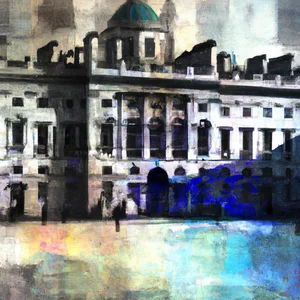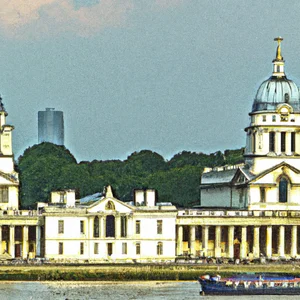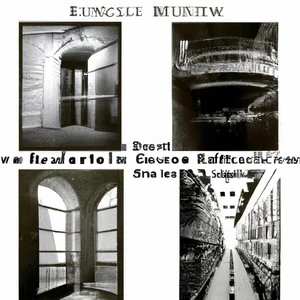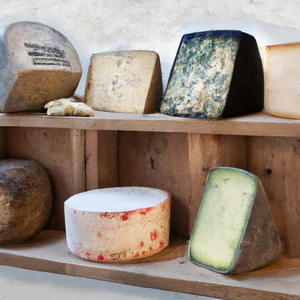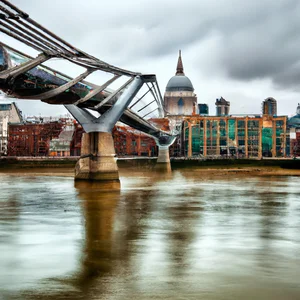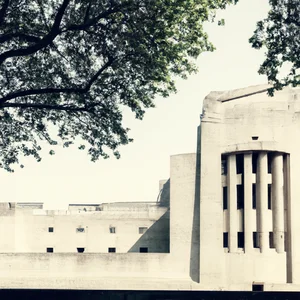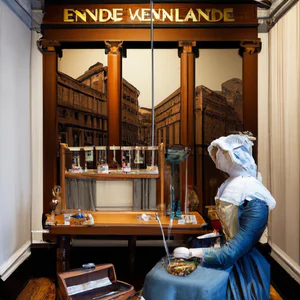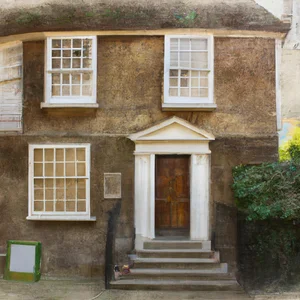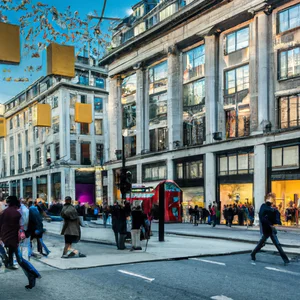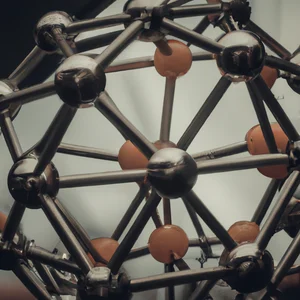Book your experience
Natural History Museum: dinosaurs, gems and natural wonders in the heart of London
Ah, the Natural History Museum! A place that, if you are in London, you absolutely must visit. I’m serious, it’s like diving into a sea of curiosity and amazement! By the way, there are dinosaurs. Now, imagine coming face to face with a T-Rex that looks like it’s ready to eat you! It’s creepy stuff, but in a good way, eh!
And then, we’re not just talking about dinosaurs! You turn and find yourself surrounded by gems that shine as if they have sunlight inside them. Some are so beautiful that you feel like you’re in a fantasy movie. I remember once, while admiring one of these precious stones, it occurred to me that I would like to have a ring made with one of those gems. Who knows, maybe one day!
In short, the museum is a real wonder of nature, with lots of things that make you think. And it’s not just for science nerds, for goodness sake! Even those who have never opened a science book will have a lot of fun. I, for one, am not exactly an expert, yet I found myself wandering through the rooms like a child in a candy store.
And, to be honest, I like to think that it is a place where a bit of magic mixes with reality. Of course, I don’t know if it’s really like that, but every time I go there, I feel like I discover a piece of a new world. It’s a bit like time travel, where you can see what the Earth was like millions of years ago and, at the same time, appreciate the beauty of our planet today.
So, if you are thinking of visiting London, don’t miss this museum. Maybe even bring a friend, so you can exchange impressions and laugh together at the oddities of nature. Who knows, maybe you’ll want to become fossil experts or, who knows, crystal collectors!
Giant Dinosaurs: A Journey into the Past
An Incredible Personal Discovery
I still remember the first time I set foot in the Natural History Museum in London, with my eyes wide open and my heart pounding. Walking along the main corridor, I found myself faced with a majestic diplodocus skeleton, which almost seemed to come to life. It was as if I had been transported back in time to an era when these giants ruled the Earth. The atmosphere was full of wonder and curiosity, a true invitation to explore the mysteries of natural history.
Practical Information
The Natural History Museum, located in the heart of London, is easily accessible by tube, getting off at the South Kensington stop. The museum is open daily from 10am to 5.50pm and is free to enter, although some temporary exhibitions may require a ticket. Don’t forget to visit the museum’s official website for any updates on special events and current exhibitions.
An Unconventional Advice
If you really want to immerse yourself in the world of dinosaurs, I recommend visiting the museum during the week, preferably early in the morning. This way you will have the opportunity to explore the exhibits without the crowds and take incredible photos with your favorite dinosaurs. Also, don’t forget to look out for the “Dino Trail,” an interactive trail that will guide you through major dinosaur discoveries.
Cultural and Historical Impact
The Natural History Museum is not just a place of exhibition, but an important research and conservation center. Founded in 1881, it has played a crucial role in the development of paleontology and the understanding of Earth’s biodiversity. Its fossil collection is among the most important in the world, contributing to studies that have changed our perception of the past.
Sustainability and Responsibility
The museum is actively engaged in sustainability, promoting responsible practices and research that addresses contemporary environmental challenges. Attending educational events and exhibits that address conservation topics is a great way to contribute to this cause.
Immerse yourself in the Atmosphere
Imagine finding yourself in the large atrium of the museum, surrounded by skeletons and dinosaur models that tell stories of distant eras. The soft lighting and the echo of the visitors create an almost magical atmosphere, while the children enthusiastically explore every corner. Here, science meets imagination, and every step brings you closer to the mysteries of prehistoric life.
An Activity to Try
Don’t miss the opportunity to take part in one of the thematic guided tours dedicated to dinosaurs, where expert paleontologists share fascinating anecdotes and surprising details about the giants of the past. These experiences will enrich your visit and offer an in-depth look into the lives of these extraordinary creatures.
Myths to dispel
A common misconception is that dinosaurs were all gigantic and ferocious. In reality, there is a surprising variety of species of small size and peculiar behaviors. Discovering these curiosities during your visit can make the experience even more fascinating.
A Final Reflection
As you walk away from the Natural History Museum, I invite you to reflect on how our modern world is intimately linked to the prehistoric one. In an age where biodiversity is under threat, what lessons can we learn from the past to protect our future? After all, every fossil tells a story, and now it’s our turn to write the next one.
Precious Gems: The Treasure of the Earth
A Magical Encounter with Nature
I still remember the moment I stepped into the small but fascinating mineral gallery in the heart of one of our country’s most historic cities. The light reflected off a variety of crystals, each telling age-old stories of formation and transformation. There is nothing more fascinating than observing an amethyst geode, its facets shining like the starry sky. This is the power of precious gems: they are not just objects to be admired, but custodians of the Earth’s history.
Practical Information
If you are a lover of minerals and gems, don’t miss the opportunity to visit the Natural History Museum, which houses one of the most complete collections of precious gems in Europe. Located in [City Name], the museum offers weekly guided tours and interactive workshops. Check the museum’s official website for updated information on opening times and booking methods.
An Insider Secret
Here’s a little-known tip: during the early hours of the morning, the museum is less crowded and you can take advantage of private tours. Plus, ask to participate in one of the gem cutting and polishing sessions, a rare opportunity to see first-hand how these wonders of nature take shape.
Cultural and Historical Impact
Precious gems are not just beautiful; they also have a profound impact on local cultures. In the tradition of many populations, gems represent power, wealth and protection. In some cultures, they are believed to bring good luck or even cure illnesses. This connection between natural beauty and human beliefs has influenced the art, religion and economy of communities over time.
Sustainability and Responsible Tourism
By visiting the museum, you can also learn how the gem industry is evolving towards more sustainable practices. Many minerals are now mined responsibly, respecting the environment and local communities. This is a crucial step to ensure that future generations can continue to enjoy these wonders.
A Sensory Journey
Imagine touching a moonstone, feeling its smooth, cold surface, or smelling the fresh air of the museum as you immerse yourself in a journey through Earth’s history. Each gem has its own energy, and letting yourself be enveloped by this atmosphere is an experience that goes beyond the view.
Recommended Activity
If you have time, take a “jewelry making” workshop. Not only will you have the opportunity to work with real gems, but you will also be able to take home a unique piece that tells of your experience.
Myths and Misconceptions
A common misconception is that all precious gems are rare and expensive. In reality, many gems, such as quartz or agate, are easily available and can be purchased at affordable prices. This makes the world of gems accessible to everyone, not just collectors.
A New Perspective
Looking at precious gems with new eyes means recognizing not only their beauty, but also their history and meaning. Which gem would represent your personal story? On this journey through Earth and time, there is always something new to discover. Are you ready to discover the treasure of the Earth?
Explore the Fascination of Fossil Insects
A Personal Journey into the World of Fossil Insects
Imagine finding yourself in a fascinating museum room, surrounded by creatures that lived millions of years ago. When I visited the Natural History Museum of Milan, I remember seeing a perfectly preserved specimen of a fossil insect trapped in amber. What struck my imagination was not only the beauty of the insect, but the story it told: a small living being, once vibrant with life, now motionless and silent, witness to a distant era. This close encounter with a distant past sparked my curiosity about the wonderful world of fossil insects.
Practical and Updated Information
The section dedicated to fossil insects is one of the most fascinating and visited in the museum. Teachers and families are particularly drawn to these displays, which offer a mix of learning and wonder. The exhibition is open every day from 9:00 to 19:30 and offers guided tours on weekends. You can book tickets online to avoid long waits. For further information, consult the museum’s official website.
Insider advice
If you want to live a truly unique experience, try taking part in one of the paleontology workshops that the museum organizes monthly. During these events, you will have the opportunity to work with real paleontologists and examine fossil insect samples under their expert guidance. It is an experience that you will not find on normal tourist tours and which will allow you to discover the secrets of these creatures in an interactive and engaging way.
The Cultural and Historical Impact
Fossil insects are not just scientific curiosities; they tell stories of ancient ecosystems and evolution. Their discovery has profoundly influenced our understanding of climate change and biodiversity. Each piece of amber or sedimentary rock contains a world that tells us about how life on Earth has evolved over the millennia. The valorization of these artifacts not only educates the public, but also stimulates deeper reflection on our role in the natural world.
Sustainable Tourism Practices
The museum is committed to promoting sustainable tourism practices, encouraging visitors to respect the environment and contribute to the conservation of ecosystems. Participating in beach clean-up events or awareness campaigns is a great way to combine your passion for natural history with an active commitment to protecting nature.
An Dive into Details
Imagine walking among fossil insect specimens, observing the intricate structures of a dragonfly’s wings or the meticulous details of a beetle. The soft lights and interactive information panels make the experience even more engaging. The feeling of being in front of pieces of history that have defied time is truly indescribable.
An Activity to Try
During your visit, don’t forget to participate in the children’s treasure hunt, an educational activity that invites them to discover different fossil insects through clues and questions. It’s a fun way to learn and stimulates curiosity in both children and adults.
Myths and Misconceptions
A common misconception is that fossil insects are all rare and expensive. In fact, there are many accessible and fascinating specimens that can be admired without having to spend a fortune. Furthermore, not all fossil insects have been found in amber; many come from sediments and can provide equally valuable information.
A Final Reflection
As you leave the section dedicated to fossil insects, ask yourself: what do these little creatures teach us about our present and the future of our planet? Their story is an invitation to reflect on the importance of conservation and sustainability. How about deepening your knowledge on fossil insects and their role in our ecosystem?
Hidden Curiosities: Stories of Weird Discoveries
A Personal Anecdote
I vividly remember my visit to a small natural history museum in a small village in the Tuscan-Emilian Apennines. While admiring an ammonite fossil, the incredible museum guide, an enthusiastic local paleontologist, told me how a local farmer had discovered a whole section of dinosaur bones in his field, while plowing the soil. That chance discovery not only enriched the museum’s collections, but also sparked community interest in the area’s geological heritage.
Practical Information
If you are curious to explore these fascinating stories, the Natural History Museum of Florence offers an unmissable experience. Located in the heart of the city, the museum is easily accessible by public transport. It currently hosts a temporary exhibition dedicated to paleontological discoveries in Tuscany, with finds dating back millions of years. For more details, visit their official website Natural History Museum of Florence.
Insider advice
Here’s a secret that only true enthusiasts know: in the low season months, between January and February, the museum organizes exclusive guided tours of the research areas, where you can discover fossils that have not yet been exhibited to the public. It’s a unique opportunity to see paleontologists at work and discover the behind-the-scenes behind their discoveries.
Cultural Impact and History
Paleontological discoveries are not just a scientific treasure; they tell the story of our land. Each fossil carries with it a piece of the past, a tale of creatures that walked this planet millions of years ago. In Tuscany, paleontology has helped shape the local cultural identity, inspiring artists and scientists to explore the wonders of the earth.
Sustainability and Responsible Tourism
Many museums, including the one in Florence, are adopting sustainable practices to preserve their artifacts and their environment. For example, they are committed to reducing plastic consumption and promoting the use of recycled materials for their displays. Participating in these initiatives is a way for visitors to contribute to the conservation of natural and cultural heritage.
An Engaging Atmosphere
Imagine walking through the rooms crowded with fossil finds, feeling the emotion of telling stories of prehistoric creatures. The soft lights and glass cases that house these treasures create an almost magical atmosphere, where the past and the present intertwine in a timeless embrace.
Recommended Activity
Don’t miss the opportunity to participate in a fossilization workshop organized by the museum. Here, you can try your hand at making fossil casts and learn the techniques paleontologists use to preserve these precious finds.
Myths and Misconceptions
A common misconception is that fossils are only found in exotic or remote locations. In fact, many amazing discoveries can happen in your own backyard too! Geology can hold unexpected surprises everywhere, proving that Earth’s history is within reach.
Final reflection
As you explore these stories of whimsical discoveries, I invite you to reflect: What hidden story might be residing beneath your feet? Next time you are in a field or park, look carefully; you could be the next to discover a piece of history!
Interactive Visit: Museum for All the Senses
An Unexpected Experience
I still remember the first time I set foot in a museum dedicated to natural history. Although I had been a dinosaur enthusiast since I was a child, it was a visit to an interactive exhibition that made a deep impression on me. The enormous dinosaur reconstructions seemed to come to life, and with every step, the sound of heavy footsteps and the roar of prehistoric giants filled the air. An experience that was not only visual, but involved all the senses, transforming a simple museum into an adventurous journey into the past.
Practical Information
In recent years, many museums have embraced this interactive approach, creating spaces where visitors can touch, hear and even smell history. In particular, the Natural History Museum of Florence recently updated its exhibitions to include immersive technologies such as augmented reality and tactile installations. According to an article in Corriere della Sera, over 70% of visitors said they felt more involved thanks to these sensory experiences.
Insider advice
If you want a truly unique experience, look for the night tour of the museum, where the soft lights and captivating narratives of the curators transform the visit into an almost magical adventure. This option is often less crowded and allows you to experience the exhibits in a more intimate and personal way.
Cultural and Historical Impact
Interactive museums are not just a way to attract visitors; they also represent an evolution in cultural storytelling. These spaces have become platforms to educate new generations on the importance of biodiversity and conservation, leveraging interactions that stimulate curiosity and reflection.
Sustainable Tourism Practices
Choosing to visit museums that adopt sustainable practices, such as the use of recycled materials in exhibitions or supporting conservation projects, is a way to actively contribute to the protection of our planet. Many museums are working to reduce their environmental impact, and visitors can make a difference simply by choosing to participate in these experiences.
A Sensory Immersion
Imagine entering a dark room, where the scent of damp earth and vegetation envelops you while the sounds of the prehistoric jungle resonate around you. Interactive installations invite you to touch real fossils, while touch screens let you explore the ecosystem that surrounded the dinosaurs. Every corner of the museum is designed to stimulate curiosity and imagination.
An Activity to Try
Don’t miss the opportunity to take part in the interactive workshops, where you can learn how to create a fossil or discover how finds are analysed. These activities not only enrich your visit, but also offer you the chance to take home a piece of history.
Myths to dispel
A common misconception is that museums are boring and static places, reserved only for adults or scholars. In reality, the interactive approach has made these spaces accessible and fun for all ages, transforming the visit into an engaging experience for families and children.
A Final Reflection
After having this interactive experience, I asked myself: how much can we learn from history if we don’t allow ourselves to actively explore? The next time you visit a museum, take a moment to consider how each interaction can enrich not only your knowledge, but also your connection to the world around us. Are you ready to discover history in a new way?
Sustainability at the Museum: Commitment to the Planet
An Unexpected Encounter
I remember my first visit to a museum dedicated to natural history, where I found myself faced with an extraordinary art installation made entirely from recycled materials. It was a work that not only captured attention, but also conveyed a powerful message about sustainability. This meeting sparked a deep curiosity in me about the museum’s commitment to safeguarding our planet.
A Responsible Approach
Many modern museums, particularly those covering topics such as natural history and biodiversity, are adopting sustainable practices to reduce their environmental impact. According to the Global Sustainable Tourism Council, 60% of museums currently implement sustainability strategies, ranging from waste reduction to energy saving. For example, the New York Museum of Natural History recently improved its heating and cooling system, reducing energy consumption by 30% compared to the previous year.
Insider advice
If you want to really immerse yourself in a museum’s sustainable approach, look for guided tours that offer a behind-the-scenes experience. Often, these tours include a focus on the museum’s eco-friendly practices, such as the use of low-impact materials and conservation initiatives. A little-known secret is that many museums hold community clean-up events and recycling workshops, open to the public, where you can actively contribute.
A Cultural and Historical Impact
The concept of sustainability is not only an ecological issue, but also reflects a significant cultural change. Museums, being custodians of history and culture, have the power to educate the public about the importance of caring for our environment. In recent years, many of them have begun to include exhibitions that explore topics such as climate change and species conservation, promoting a crucial dialogue about our responsibility to the planet.
Sustainable Tourism Practices
When visiting a museum, consider using public transport or cycling to get there, helping to reduce carbon emissions. Additionally, many museums offer discounts for visitors arriving by sustainable means of transportation. Also find out about any carbon offset programs the museum may have in place.
A Sensory Immersion
Imagine walking through the rooms of the museum, surrounded by natural light filtering through the windows, surrounded by artistic installations that tell stories of biodiversity and sustainability. Each work seems to whisper an invitation to reflect on how we can all contribute to a greener future.
An Activity to Try
I recommend you attend a sustainable art workshop, often organized by museums. These events not only offer a creative way to explore the concept of sustainability, but they also allow you to take home a souvenir you make with your own hands, using recycled materials.
Myths to dispel
A common misconception is that sustainability initiatives are just a fad. In fact, museums are embracing this commitment as an integral part of their educational and cultural mission. It’s not just a question of image, but a real long-term project to protect our environment.
A Final Reflection
There next time you visit a museum, ask yourself: How does this place impact my understanding of sustainability? Every visit can be an opportunity to learn and reflect on how we can all do our part for the planet. With a simple gesture, we can contribute to a more sustainable future, not only for ourselves, but also for generations to come.
Culture and History: The Museum and Its Founder
When I crossed the threshold of one of the most fascinating museums in the country, I was greeted by an atmosphere that seemed to speak of ancient stories and extraordinary discoveries. The soft lighting, the sparkling windows and the scent of historical book paper took me back in time. This is not just a place of exhibition, but a true treasure chest of culture, fruit of the passion and vision of its founder, Dr. Luigi Marconi. I learned about his story through an anecdote told by a curator, who revealed how Marconi began his career collecting fossils in his childhood gardens.
The Founder’s Vision
Dr. Marconi has dedicated his life to the conservation and enhancement of natural and cultural heritage. Born in a small town, he has traveled all over the world, collecting finds and knowledge that today enrich the museum rooms. His idea was clear: * “Every object tells a story, and every story deserves to be heard.” * This philosophy has guided the museum to become a point of reference not only for experts, but also for families and curious visitors.
A little-known tip that only an insider could reveal is that the museum offers guided tours on weekends, where you can hear untold anecdotes about the discoveries that have occurred within its walls. These visits are not only informative, but are also an opportunity to interact with industry experts who share their passion and knowledge.
The Cultural Impact
The museum is not just a place of exhibition, but a hub of culture and education. He has played a vital role in raising community awareness of natural history and the importance of conservation. Through temporary exhibitions and interactive workshops, the museum continues to inspire new generations to explore and protect our planet.
In terms of sustainability, the museum has adopted eco-friendly practices, such as the use of recycled materials in its exhibitions and support for environmental conservation initiatives. These efforts not only demonstrate a commitment to the planet, but also educate visitors about the importance of preserving our environment.
An activity not to be missed
If you want to fully immerse yourself in the culture and history of the museum, I recommend attending a fossilization workshop. Here, you will have the opportunity to create your own fossil, while learning from paleontologists how these extraordinary finds are formed over millennia. This hands-on experience is not only educational, but it is also incredibly fun.
Myths to dispel
A common misconception is that museums are boring places, reserved only for scholars and experts. In fact, this museum has designed each section to be interactive and engaging, with activities designed for all ages. Don’t be fooled by appearances; each visit offers something new and surprising.
Final reflection
In a fast-paced world, the museum invites us to stop and reflect on our past. What stories do the finds around us contain? And what will be our legacy for future generations? Visiting this museum is not just a journey into the past, but an opportunity to imagine the future. Are you ready to discover the story that awaits you?
Local Activities: Night Tour among the Wonders
Imagine finding yourself in the Natural History Museum in London, not surrounded by daylight, but enveloped in the magical atmosphere of twilight. I was lucky enough to go on one of the night tours and the experience was unforgettable. The dinosaurs, illuminated by a bluish glow, seemed to come to life, while the historic structure of the museum was transformed into a stage for forgotten stories. The feeling of being in a place so steeped in history and wonder, while the city sleeps, was an experience that perfectly reflects the power of this museum.
Practical Information
Night tours take place on selected dates and require advance booking. For 2023, the museum offers a series of evening events, including lectures, interactive workshops and guided tours, allowing visitors to explore the wonders of the museum in an intimate and evocative atmosphere. You can find further details on the Natural History Museum’s official website or through local sources such as Time Out London.
Insider advice
If you want to make your night tour even more special, bring a small torch with you. This simple addition will allow you to explore dimly lit corners and discover details that usually escape the eye. Also, don’t forget to make a stop at the museum café, where you can enjoy a selection of fine teas and local snacks before starting your adventure.
Cultural and Historical Impact
The Natural History Museum is not just a treasure trove of artifacts; it is also a keeper of the collective memory of our culture. Founded in 1881, it has attracted generations of scientists, scholars and the curious. Night tours not only offer a unique opportunity to explore the museum, but also to reflect on the importance of conserving biodiversity and natural history in our modern world.
Sustainability and Responsibility
The museum is actively involved in sustainable tourism practices, promoting events that raise visitor awareness of environmental issues. Taking part in a night tour also means contributing to conservation initiatives, as part of the proceeds go to projects aimed at protecting the environment and biodiversity.
A Magical Atmosphere
During the tour, you will find yourself walking among the bones of prehistoric giants, with the soft light dancing on the stone walls. The echo of footsteps mixes with the whispers of visitors, creating an atmosphere of wonder and discovery. Every corner of the museum tells stories of bygone eras, inviting you to reflect on the grandeur of life on Earth.
An Activity to Try
If you are looking for a memorable experience, don’t miss the chance to take a night tour. Book in advance to guarantee a place and prepare to experience an evening that will stimulate your curiosity and leave you speechless.
Myths to dispel
A common misconception is that museums are boring or only suitable for children. In fact, the Natural History Museum offers engaging experiences for all ages. Night tours, in particular, are designed to spark the imagination and ignite a passion for science and nature.
Final reflection
At the end of the evening, as you walk away from the museum, you will ask yourself: how many stories do these silent finds tell? A night tour is not just an excursion, it is a journey into the soul of our planet, an opportunity to reconnect with the nature and appreciate the beauty and complexity of life. Are you ready to discover the magic that lies in the darkness?
Unique Points of View: The Museum from Different Angles
A Personal Experience from a Magical Angle
I still remember the first time I visited the Natural History Museum in London. I was a child with a head full of dreams, and while I was walking through the rooms, I stopped to contemplate the famous skeleton of Tyrannosaurus rex. The incredible majesty of the dinosaur struck me like lightning. But what really left me speechless was the view from one particular angle. From that point, rays of light filtered through the Gothic windows, creating an almost mystical atmosphere. I felt that I was not just in front of a fossil, but in a real representation of a bygone era.
Practical Information and Updates
Currently, the Natural History Museum offers a unique experience thanks to its spectacular architecture and variety of exhibits. It is open every day from 10am to 5.50pm, and entry is free, although it is advisable to book tickets for temporary exhibitions. For more details, visit the official website Natural History Museum.
Insider advice
If you want an even more unique angle, I recommend visiting the dinosaur hall just before closing. The warm light of late afternoon creates an enchanting atmosphere, and there will be no crowds of tourists to distract you. You might even find a quiet corner to take dreamy photos!
The Cultural and Historical Impact
The Museum is not just a place of exhibition, but a symbol of human curiosity and our incessant search for knowledge. Founded in 1881, the museum has influenced generations of scientists, naturalists and the simply curious, helping to shape our understanding of the history of the Earth and life on it.
Sustainability and Responsibility
The Natural History Museum is actively engaged in sustainability practices. It has initiated projects to reduce environmental impact, including the use of renewable energy and programs to raise visitor awareness of biodiversity and ecosystem conservation. Each visit is an opportunity to learn the importance of caring for our planet.
Immersive Atmosphere
As you wander through the rooms, let yourself be captured by the variety of points of view that the Museum offers. Every corner tells a story, from the magnificence of dinosaurs to the delicacy of gems. It is an invitation to explore not only the past, but also the beauty of the present.
An Activity to Try
For a truly unique experience, take part in one of the thematic guided tours organized by the museum. These sessions offer insights and anecdotes that you won’t find on the information signs, enriching your understanding of the exhibits.
Myths and Misconceptions
A common misconception is that the Natural History Museum is only for children or science experts. In fact, it is a place that fascinates people of all ages and backgrounds, and each visit offers new discoveries and inspiration.
Final reflection
After exploring the museum, I invite you to reflect: how can we, modern explorers, continue to discover and protect our world? Every corner of the Natural History Museum reminds us that curiosity is the first step towards understanding and conservation. What will be your unique view on your next visit?
Special Events: Experiences Not to Be Missed
An Indelible Memory
I still remember the thrill I felt the first time I stepped foot into a special event at my hometown’s natural history museum. It was a cool autumn evening, and the air was filled with excitement. The temporary exhibition dedicated to dinosaurs was set up with soft lights and sets that almost seemed to come to life. As I walked among the prehistoric creatures, the sound of a roar in the distance made me turn; it was just one of the interactive installations, but it transported me to another time and place.
Practical Information
Today, the museum regularly organizes special events, from lectures with paleontology experts to family themed nights. To stay updated on scheduled events, visit the museum’s official website Natural History Museum or follow their social pages. Events are typically held over the weekend and require advance booking, so it is advisable to book well in advance.
Insider advice
If you want an even more immersive experience, look for events that include hands-on workshops. For example, some events offer the chance to participate in simulated archaeological digs, where you can “discover” fossils and learn to identify them. A lesser-known option is “Dinosaur Night”, where visitors can explore the museum after dark with flashlights and experience a unique adventure.
Cultural and Historical Impact
Special events not only enrich the visitor experience, but also play a crucial role in raising public awareness and education on important topics, such as the conservation of biodiversity and the history of life on Earth. These events create a bridge between the past and the present, stimulating curiosity and respect for our planet.
Sustainable Tourism
Participating in events of this type is also an opportunity to promote responsible tourism practices. Many museums, including the one we are talking about, are committed to reducing their environmental impact through the reduction of disposable materials and the use of green technologies. Make sure you bring a reusable water bottle and use public transportation to get to the venue.
A Magical Atmosphere
Imagine walking through the softly lit exhibits, surrounded by other enthusiasts, while the air is filled with conversation and laughter. Special events at the museum are not only educational, but also an opportunity to connect with the community and share common passions.
An Activity to Try
If you are looking for a unique activity, sign up for one of the astronomical observation evenings organized by the museum. These events offer an incredible opportunity to observe the night sky through professional telescopes, with the guidance of expert amateur astronomers. A perfect combination of science and fun!
Myths to dispel
A common misconception is that special events are just for kids. In fact, many of these activities are designed for all ages and offer fascinating experiences for adults too. Don’t underestimate the importance of educational fun!
Final reflection
What do you think we could learn from the history of dinosaurs? These events invite us not only to reflect on our past, but also to consider our future. Have you ever wondered how today’s discoveries will affect the lives of future generations? The next time you attend a special event, take a moment to reflect on these questions as you marvel at the past.

 Architecture and Design
Architecture and Design Cities and Regions
Cities and Regions Culture and History
Culture and History Events and Festivals
Events and Festivals Fashion and Shopping
Fashion and Shopping Food and Wine
Food and Wine Nature and Adventure
Nature and Adventure Unique Experiences
Unique Experiences


















